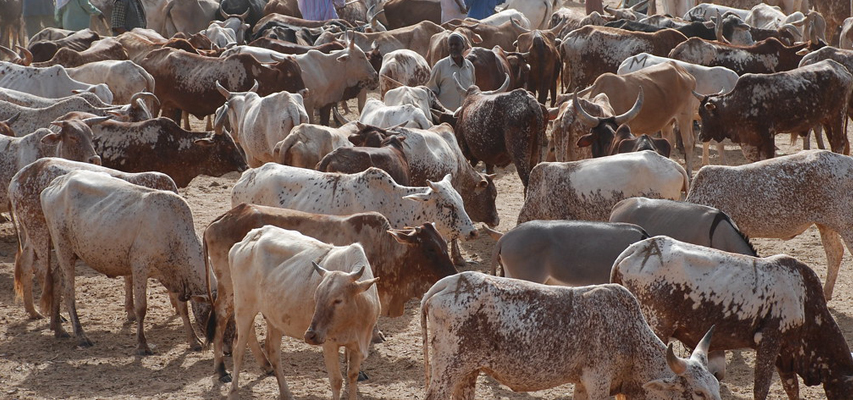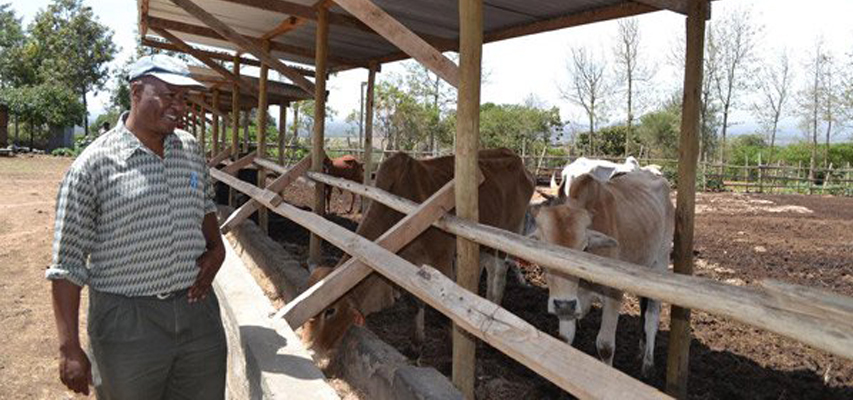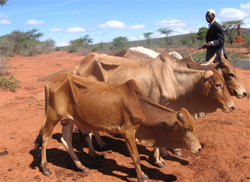
The harsh realities of climate change that have made weather patterns less predictable and led to prolonged periods of drought are popularising a more sustainable feeding system.
Death of animals due to severe droughts in Kenya’s dry lands has been a cause of massive losses to pastoralists. In an attempt to mitigate the blow, the government, over the years, has been buying the animals from farmers and processing them for the market through the Kenya Meat Commission. But as climate change continues to pose fresh challenges, this model has increasingly become unsustainable. Forced back to the drawing board, the government has settled for the feedlot system, which it is putting in place in 12 arid counties. They include Machakos, Isiolo, Laikipia, Tana River, Lamu, Narok, Baringo, Kajiado, Marsabit, Kwale, Taita Taveta and West Pokot.
According to the Livestock Department, the project will boost food security, a major pillar in the Big Four development agenda, through increased supply of livestock for the local and export market. But what are feedlots? These are special holding zones where animals from the rangelands are treated and fed on special diet to boost weight gain before being sold for slaughter. Dr James Gakuo, who runs a feedlot in Nyeri, says he sources emaciated animals from arid and semi-arid lands and fattens them for the market. His one-acre Pioneer Feedlot farm handles a herd of at least 400 animals at any time. Once he brings them to the farm, he checks them for diseases such as the contagious bovine pleuropneumonia (CBPP) which is common in arid areas. He then de-worms and treats any that is sick before the special feeding.
“I mainly buy Boran and Sahiwal breeds then quarantine the animals in the first week for the tests to avoid spreading any diseases or pests,” he said. Gakuo sources the Boran, Sahiwal and Zebu breeds or their crosses from Laikipia, Bomet, Narok and Kajiado. A veterinarian by profession, Gakuo buys the animals at an average of Sh25,000, and uses up to Sh15,000 on feeds, transport, labour and treatment before releasing them to the market for between Sh60,000 and Sh65,000 each. The farmer has rehabilitated some 4,000 animals in the three years that he has been in the business. He feeds the skinny animals on locally made organic rations prepared from maize germ, barley, sunflower and cotton seed-cake. He makes the rations himself at his feed processing plant in Kiganjo. The animals are intensively fed on the rations, gaining at least 90kg in the three months that they stay in the feedlot.
“I bring in the animals when they are about 280kg and by the time they are ready for the market, they are weighing 400kg.” He said most of Kenya’s beef animals are kept in the rangelands where conditions are not very conducive for fattening due to lack of pasture.
“Animals that are not emaciated are slightly expensive, but this also reduces the fattening period from 90 to 30 or 45 days,” says Gakuo, who worked in a similar project in Botswana, where the system is widely embraced, making the country a leading exporter of beef to the European Union in Africa. Feedlots, notes Gakuo, offer pastoralists a year-round market but they come particularly in handy when there is prediction of drought.
The business, however, is capital intensive as one must always have ready cash to buy animals from herders. With each Kenyan consuming up to 15kg of meat annually, according to Kenya Markets Trust (KMT), the beef production model holds key to rising demand for meat. Dr. Abdikarim Daud, the Livestock Sector lead at Kenya Markets Trust, said feedlots add value to the beef market chain, and helps farmers adapt to climate change and variability. He notes that loss of animals to drought can be eradicated public-private partnerships. Dr Evans Kituyi, a Senior Programme Specialist in the Climate Change Programme at the International Development Research Centre, terms it a good intervention to save pastoralists from perennial losses. With cotton seed cake, one of the feed ingredients, feedlots can revive the cotton sector.

Running a feedlot successfully
As with any new venture, acquire extensive knowledge in the business, especially on feeding the animals. Success lies in proper supply of nutritional requirements for the different functions of the animal’s body. Beef cattle need energy, proteins, minerals, vitamins and water in specified quantities every day. These help the animal in weight gain, reproduction and movement. Animals in a feedlot are confined to limit movement as they are supplied with highly nutritious feeds at three per cent of their body weight in dry matter. Separate the males and females to limit reproduction chances. Locate your feedlot in areas with low annual rainfall of below 750mm to minimise the nutrient resources allocated to temperature regulation and management of diseases like foot rot and pneumonia.
The feeding regime recommended is three times a day of feed portions, constituting three per cent of the animal’s body weight as dry matter. Get the feeds from a reputable manufacturer or make your own rations to be assured of the quality. Sufficient water is critical in feedlot farming because it is a major nutrient for the cattle and is also used for maintaining hygiene. A beef animal requires at least 40 litres of water daily, which may increase depending on environmental temperatures.
As you engage in the business, keep in mind that a feedlot farmer is not a cattle producer but a finisher who fattens the cattle for the market.
